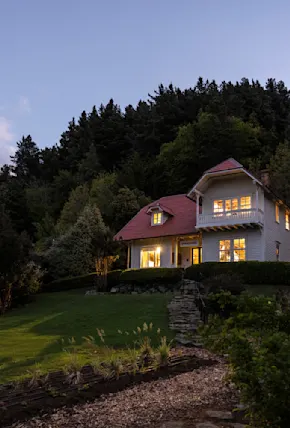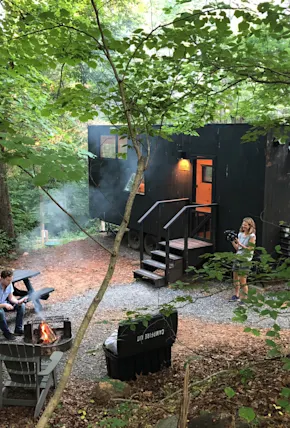Although the practicality of converted shipping container homes remains debatable, there are still notable examples that are so well-designed, they're worth a good, long look. Like the Container Cabin by Tung Jai Ork Baab Architects in Nakhon Nayok, Thailand. Made of four interconnected and stacked shipping containers (plus a fifth on its own), the main structure is covered by a skeletal steel A-frame roof—the resulting structure is an amalgamation of contemporary architectural and something that's just plain fun to look at.
Designed as a holiday home for a young family, the property is part of the studio's ongoing project, OOST Kampville. The project is a retreat destination on the grounds of a former rice paddy field that offers additional rental accommodations and outdoor spaces for urbanites to escape to from nearby Bangkok and other metropolises.











